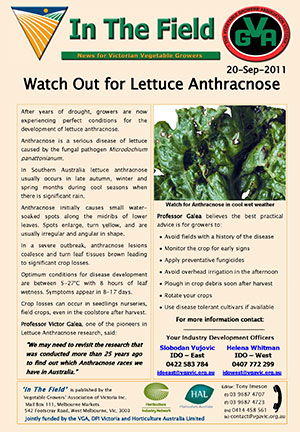|
|
After years of drought, growers are now experiencing perfect conditions for the development of lettuce anthracnose. Anthracnose is a serious disease of lettuce caused by the fungal pathogen Microdochium panattonianum. In Southern Australia lettuce anthracnose usually occurs in late autumn, winter and spring months during cool seasons when there is significant rain. Anthracnose initially causes small water-soaked spots along the midribs of lower leaves. Spots enlarge, turn yellow, and are usually irregular and angular in shape. In a severe outbreak, anthracnose lesions coalesce and turn leaf tissues brown leading to significant crop losses. Optimum conditions for disease development are between 5-27°C with 8 hours of leaf wetness. Symptoms appear in 8-17 days. Crop losses can occur in seedlings nurseries, field crops, even in the coolstore after harvest. Professor Victor Galea, one of the pioneers in Lettuce Anthracnose research, said:
Professor Galea believes the best practical advice is for growers to:
See Also : For more information contact your Industry Development Officers :
|
|

